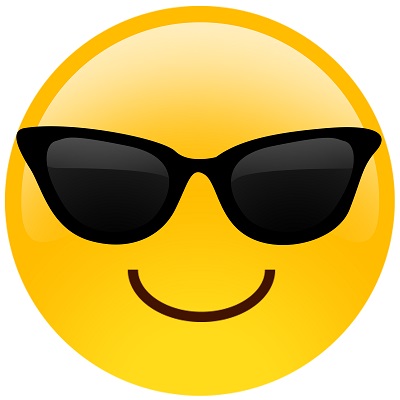
Many people in today’s generation know what an emoji is. They are used in most often in our chats regardless of what kind of application that we use to chat. But what exactly are these emojis? Who created them?
An emoji is a small picture or an icon used to express an idea or an emotion. “Emoji” is a Japanese word. It is a combination of “e” (picture) and “moji” (character).
The idea of using a picture or a similar icon instead of word runs back to 1960s. Russian novelist Vladimir Nabokov was interviewed by the Times magazine in 1969 and in the interview he said “I often think there should exist a special typographical sign for a smile — some sort of concave mark, a supine round bracket.”
Emoticons
The predecessor of emojis is emoticons. It was first used in 1982 by a computer scientist called Scott Fahlman. He suggested to use a text based symbols such as 🙂 or 😦 to replace a language.
In 1990s companies based in America, Europe and Japan started experimenting after Fahlman’s theory. In the same decade Windings was invented. Windings is a font created by Charles Bigelow and Kris Holmes. The font was used by Microsoft. It allowed people to send these symbols with their text messages but there was a problem. To use or to view these symbols Windings font should be installed.

In 1995 Alcatel released a phone BC 600 which had replaced the welcome text with a smiley face. In 1997 Japanese phone company J-Phone had released SkyWalker DP-211SW with a set of 90 emojis. They were 12*12 pixels in size. These emojis were black and white and first of its kind.

In 1999 Shigetaka Kurita created a set of 176 emojis for Japanese mobile phone operator NTT Docomo. Until most recently Kurita’s effort was know as the first cellular emojis. In an interview Kurita revealed that his inspiration for the new emojis is Japanese manga. Manga is a type of comic or a graphic novel that uses special features to express emotions in the drawn characters such as a water droplet on the face to show tiredness. Unlike the J-Phone’s emojis Kurita’s emojis were colored.
During this period emojis became more popular in Japan. It was one of the highest trends at the time. Because of its popularity the companies in the western world became interested in emojis.
The Smiley Company, a branding company based in London which holds the license to the Smiley Face in over 100 countries, developed “The Smiley Dictionary” in 2001. It was a desktop platform which aimed to allow people to use smileys as a text in emails and writings on the computer. The CEO of the Smiley company Nicolas Loufrani created a smiley toolbar, which was available at smileydictionary.com during the early 2000s to be sent as emojis.

By the 2004 mobile service providers outside the Asia, specially in America and Europe discussed about introducing their own emojis. After that few western companies such as Apple and Google started working with the Japanese companies to make a standard set of emojis. In 2007 Mark Davis and his colleagues Kat Momoi and Markus Scherer asked to introduce emojis into the Unicode standard from the Unicode Technical Committee (UTC). UTC agreed and over the years developers from western and Japan met to create a standard set of emojis and finally after several feedback and suggestions of changes, in 2010 United States, Europe, and Japan agreed on a set of 722 emojis as the standard set, which would be released as Unicode 6.0.

After 2010 the popularity and usage of emojis increased. Many mobile phone modules had the feature built in that enabled users to use emojis without extra applications. This increase of popularity made designing new emojis in order to meet the demands of different cultures around the world. Since 2015 different skin colors have been available for emojis. In the same year Oxford Dictionary named 😂 (face with tears of joy) as the”Word of the year”. Also it is the most popular emoji among the users.

By the end of 2020 there were 3136 standard emojis and by the end of 2021 there will be 3353 emojis. Today these emojis are so popular that researches show that about 5 billion emojis are used on everyday in Facebook and Facebook Messenger alone.
In 2014, 17th of July was named as the world emoji Day
But there are some cons using emojis when communicating. Because sometime people misunderstand or misinterpret the meaning behind the emoji. This could happen simply because the difference between the sender and receiver but also sometimes when the sender and receiver does not use the same application the receiver’s application visualize the emoji differently. Also there is a emoji that represent a gun and the text that used them in it were considered as a death threat. There are multiple arrests made over this matter. Therefore in 2016 Apple announced that the gun emoji will be changed into a water pistol emoji. That is why even if your phone has the gun emoji when you typed it in the Facebook it shows as a water pistol which really does not match the meaning or vibe in your post or text.
Before 30 years there was not any picture that we could use instead of text but now we have over 3000 emojis that we are free to use. What would we use after 30 years in the future? Even the communication is evolving. Let’s use them for good.




1 Comment